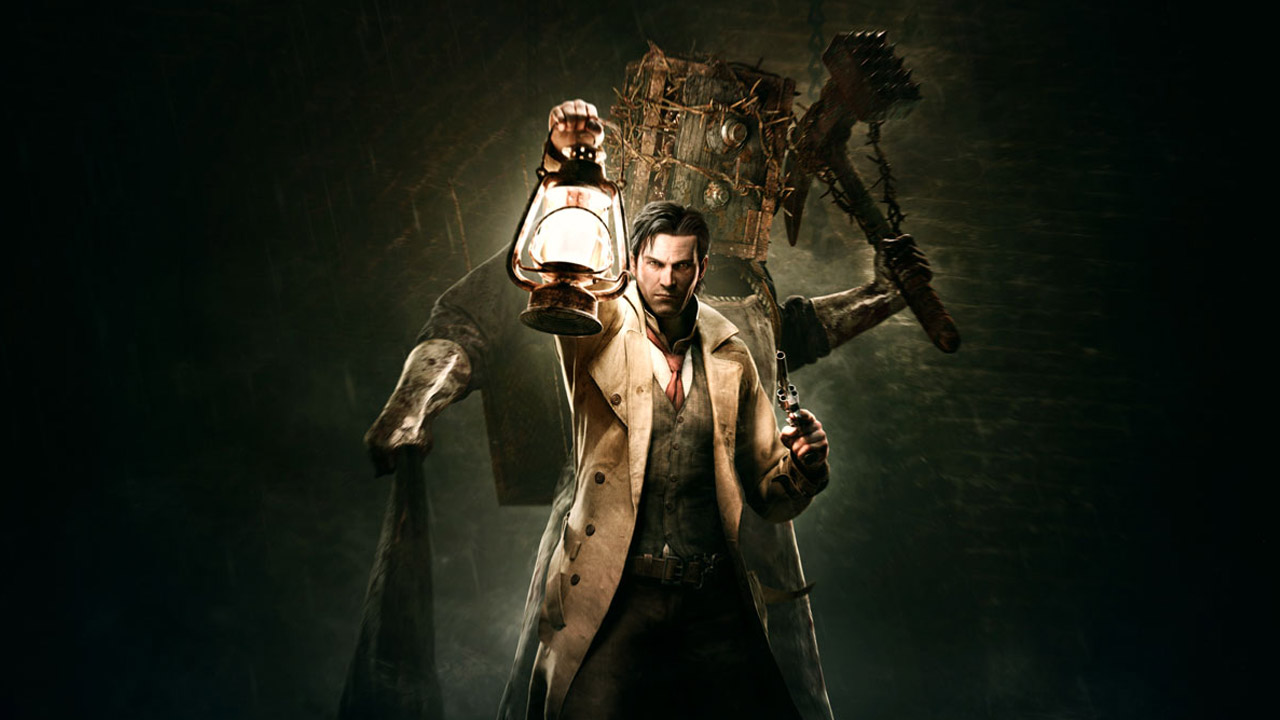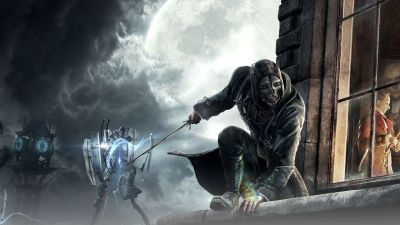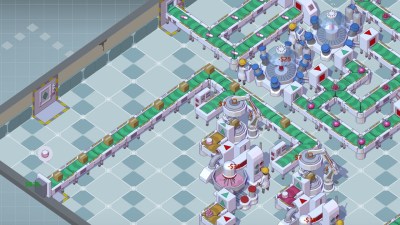The Evil Within isn’t a game that immediately hits you over the head and demands your attention. It looks a little scruffy and its mechanics are shamelessly cribbed from director Shinji Mikami’s work on that other survival horror game, Resident Evil.
But spend a bit of time with the creator’s return to the genre he effectively defined, and The Evil Within reveals itself to be rather clever. Never exactly original, but clever. Mikami knows what works when it comes to creating a successful horror game; it might be cliche at this point to describe his latest game as a greatest hits package, but that’s effectively what The Evil Within is - albeit with a few twists of its own.
The premise is relatively straightforward horror stuff - you play as grizzled police detective Sebastian Castellanos, and much of the game revolves around a creepy old Asylum in the fictional Krimson City. After an opening section that transitions from fraught tension to breackneck Hollywood disaster-movie, things settle down into more familiar territory. The story never really goes anywhere - to be honest, it feels a bit like a simple way to stitch together various scenarios, and the supporting cast never really rise beyond standard tropes; but it’s serviceable enough, and the hints that Sebastian might actually be imagining the whole thing - complete with sojourns into an otherworldly alternate-reality version of the Asylum - keep you guessing just enough to move things along.
If you’ve played Resident Evil 4 - and the chances are, if you’re reading this, then you have - you’ll be at an advantage. Similarly to Mikami’s last genre outing (amazingly, nearly a decade old now), the camera sits over Sebastian’s shoulder. The Evil Within is played from a third-person perspective; movement is relatively slow and plodding, though thankfully the game never quite devolves into the same kind of nightmarish control-wrestling as older Resi games. Sebastian isn’t exactly spry, but at least he doesn’t control like a rusted Panzer tank running on petrol fumes.
For the most part, the slow nature of movement doesn’t matter. The Evil Within soon starts to resemble something else entirely, revealing itself to be as much a stealth game as a survival horror title. The Evil Within demands that you take things slow, keep out of sight wherever possible, and take down your opponents silently and swiftly. It never quite develops into something like Metal Gear Solid, but it’s certainly more demanding of patience and situational awareness than the older - and especially the more recent - Resident Evil games.
Enemies are fairly standard horror fare. Early on, you’re confronted by a chainsaw-wielding maniac that looks like he took a wrong turn on the way to the weekly Los Illuminados meeting, and things only get more familiar from there. They’re not quite zombies that you’re facing, but… well, ok, they are bloody zombies, in all but name - slow-moving (mostly), gore-soaked, moaning zombies, of the kind we’ve seen a hundred times before. Mikami has long professed his admiration for the work of movie director George Romero - creator of Night of the Living Dead; but after so many years working with the shambling undead, you’d think he might have fancied a break from the norm. It seems not. Things do get a bit more varied as you progress however - although a number of the Boss monsters are reused over the course of the 10-15 hour running time (depending on difficulty), you can tell that the artists had a ball designing them. Some of the more disturbing creations even come close to rivalling Silent Hill 2‘s Pyramid Head in the Sinister Sweepstakes, and that’s saying something.
While the enemies and environments might not exactly be the most inspired of creations, and most of the mechanics are familiar to anyone who’s played a horror game in the last 20 years, The Evil Within still manages to be atmospheric. You’re unlikely to jump out of your skin at any point - this is no Alien Isolation - but there’s a constant feeling of unease as you slowly creep around the innards of Beacon Mental Hospital and its immediate surroundings. Mikami knows how to create tension, and despite the years since he last dabbled with keeping players on the edge of their seat, he’s lost none of that ability. Sebastian’s fragility - both physical and mental - is constantly enforced upon you as you play through the game’s 15 chapters, and while he’s a bit of a dab hand with firearms, ammunition is scarce enough that you’re constantly only a bullet or two away from feeling helpless. Much of the time you’ll instead find yourself sneaking around enemies and avoiding combat. Resident Evil 4 might have revelled in its more action-oriented direction, but The Evil Within sees Mikami dialling things back to a more considered approach that punishes rushing in and rewards cautiously creeping through your environment.
Despite this tension, at times the game starts to lean dangerously close to feeling like a parody of the genre. There are hints of this early on in the prologue chapter. While for the most part things exist in a steady and slow rhythm, occasionally it all gets a bit mental - as though Mikami or one of the other developers at Tango Gameworks had a bit too much sugar on the day they coded the sequence, or borrowed from the design bible of No More Heroes developer GrassHopper Manufacture. So there’s a zombie driving a car while wielding a machine gun (yes, really), some bizarre quick-time-event-prompting traps which look like they were left on the cutting room floor of a Saw movie, and the final boss is, well, just downright odd - a multi-stage encounter rendered frustrating by an irritating gauntlet of foes who spawn from all directions.
As far as your arsenal is concerned, Tango Gameworks generally plays it safe. You have your usual combination of shotguns, rifles and handguns, as well as an assortment of melee weapons. Where things get interesting though is when you get a hold of the crossbow. With a multitude of craftable ammo types available, the crossbow switfly becomes your go-to weapon for almost any encounter - to the point where you wonder why Tango even bothered including anything else to play with. With it, you can set up traps, freeze enemies, set them on fire, slow them down with a quick electrical shot or - my personal favorite - harpoon them to the walls (which never gets old).
On the technical side, The Evil Within is something of a mixed bag. Even on current-gen systems, the visuals often feel distinctly last-gen: there’s a distracting amount of aliasing on both characters and the environments, many textures are distinctly low-res, and on consoles there’s a very prevalent border framing the action at all times. The border can be removed on the PC version of the game, after publisher Bethesda was roundly humiliated by gamers unwilling to accept their excuse that they were present for “cinematic reasons”, but on consoles it often feels like your field of view is a little too restricted. Despite this, environments are detailed, character animation is actually quite impressive (the odd glitch aside), and the game features some very nice lighting and smoke effects. But the overall visual presentation is spotty.
Aurally, we’re in much more impressive territory. The acting has more ham than your local butcher; but when it comes to music and effects, The Evil Within rarely disappoints. Special mention has to go to the use of French classicist Claude Debussy’s Clair de Lune, which is used throughout the game as a siren call, alerting you to a much-needed warp point back to the alternate-asylum where you can save your game and upgrade your abilities. For gamers of a certain age, it might make you want to run out and buy a bottle of Chanel No. 5 - but Clair de Lune‘s lilting melody brings a ray of hope and calm amidst the gore-soaked madness that otherwise surrounds you.
But despite these frustrations and irritating little issues, The Evil Within manages to maintain a certain amount of dignity. It’s certainly a game that will appeal more to the Resident Evil crowd than it will the Silent Hill posse, but it’s engaging throughout - even when it’s making you roll your eyes after being confronted by yet another genre cliche.
The Evil Within isn’t likely to be regarded as a classic of the genre. Many of its gameplay beats are overly familiar, technically it’s rough enough around the edges, and some will find themselves frustrated by its quirks. But it has plenty of atmosphere, and just enough in the way of new ideas that it doesn’t feel completely as though you’re re-treading old ground. It’s a decent addition to the horror pantheon, in other words - and as a way for the famed director to dip his toes back into the blood, it’s not a bad warming-up exercise.








